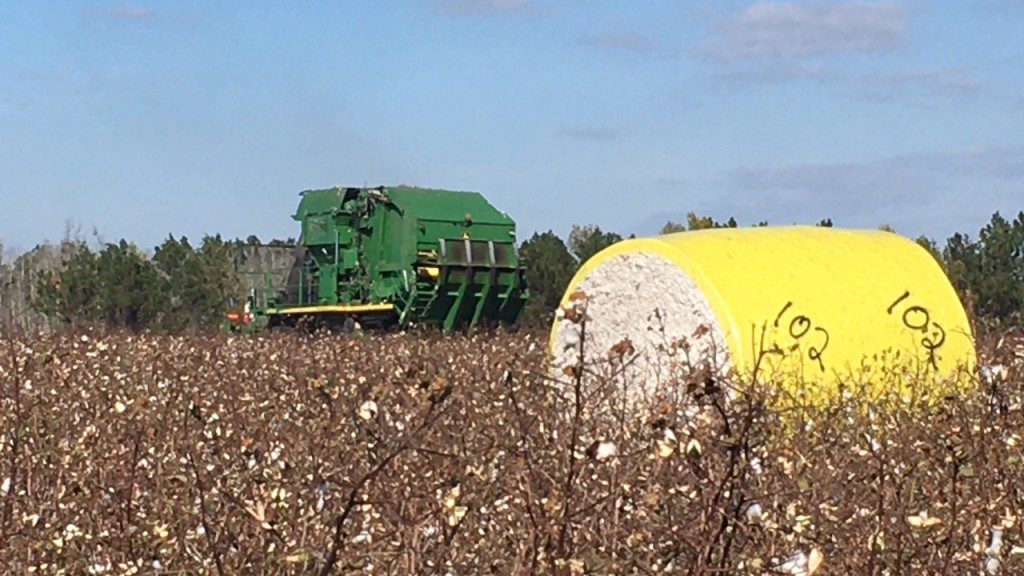Jeremy Kichler
-
A NGO group is currently petitioning the US EPA to revoke all food use tolerances for the organophosphate class of chemistry. The petitioners request that the Agency revoke all tolerances and cancel all associated registrations for food uses of the following organophosphate pesticides (OPs): Acephate, Densulide, Chlorethoxyfos, Chlorpyrifos-methyl, Diazinon, Dichlorvos, Dicrotophos, Dimethoate, Ethoprop, Malathion, Naled,…
-
I have received this question a couple of times this week from growers and retailers with indeterminate soybeans. According to the soybean weed control section of the 2022 UGA Pest Management Handbook, paraquat can be applied to soybeans based on the following instructions. The paraquat rate according to this reference is 0.25 lb ai per acre…
-
Dr. Lenny Wells, UGA Pecan Horticulturalist, discusses water split in pecan in his most recent blog post. This is just a reminder that given the recent rain and the stage the pecans are in, if you have not seen it already, you we will likely be seeing water stage fruit split on many varieties over…
Posted in: Pecans -
Colquitt County Cotton Defoliation and Peanut Harvest Meeting will be held on September 6, 2022 at noon. The meeting will be held at the Colquitt County Extension office in Moultrie. Drs. Camp Hand and Scott Monfort will be the keynote speakers. Cotton: Whitefly has been the topic of discussion again this week. The cotton crop…
-
Now is the best time to conduct tissue analysis of your citrus trees. The UGA lab has grant funds to conduct nutrient analysis surveys from citrus trees in Georgia. This year, to get a higher level of participation, the lab is opening free tissue analysis sampling up to growers throughout Georgia. UGA will cover the…
Posted in: citrus -
Bob Kemerait, Plant Pathologist, UGAAugust is a month that is critically important for disease and nematode management for peanuts grown in Georgia. Heat, humidity, sporadic rainfall, days since planting, and growth of the peanut plants all put the crop at high risk for diseases, especially white mold and leaf spot. The heat, humidity, rainfall, and…
-
Martin Wunderly, Raymond Fitzpatrick, Robyn Stewart, Shanna Reynolds, and Pedro Fontes – Good quality water is essential for adequate animal performance and cattle need between 8 to 20 gallons of water per day, depending on size, diet, status, and weather. As we get into the warmest months of the year, having an adequate water supply for our…
Posted in: Beef Cattle -
It has been an interesting week in agriculture in Colquitt County. The illustration from NOAA shows the observed rainfall total for the past week. Growers have been starting to irrigate cotton and peanuts again. Corn harvest is starting and whitefly populations are building in area cotton fields. Cotton: Whitefly has been the topic of discussion…
-
Aug 2, 2022 | Written by Lenny Wells As we enter August shell hardening is upon us for Pawnee and other varieties are only a few days to weeks behind. This means that for Pawnee we are shifting from nut sizing to kernel filling. As a result there are two things to keep in mind: 1) You should…
Posted in: Pecans -
Corn producers are beginning to harvest their crop in Colquitt County, and so far I have been hearing some good yields (220 bu +). This corn crop has seen its fair share of difficulties due to a period of hot, dry weather followed by a very rainy weather pattern. We’re hoping for a safe and successful…
Posted in: Corn
